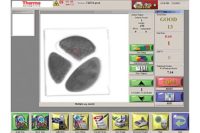How to optimize product contamination inspection

Haunting every food manufacturer or processor is the possible recall of one of its products contaminated with a foreign material––a public event that would be costly not only in direct costs of recalling the product, but also in lost retailer and consumer confidence and damaged brand image. Rebuilding these often requires years of effort and expense.
FSMA (the 2011 Food Safety Modernization Act) requires each company to create a written food safety plan and implement it. Creating that plan—which includes providing for inspection of products and packaging at critical points on the line to detect contamination and remove it from the production stream—will guard against contaminated product leaving your facility and entering the marketplace where it can be subject to recall.
The following five steps will help to optimize that inspection protection to ensure product quality and protect your brand.
Understand the regulations
As food manufacturers are well aware, regulations today come from many directions—from national and state government bodies, industry standards groups and individual retailers. Keeping up with these regulations can be a daunting task. Rather than tasking one person with the job, many companies establish task groups responsible for becoming familiar with these various regulations, and with the standards of the GFSI (Global Food Safety Initiative).
Know your product
What would seem to be something you know intimately––your own products––you may not “know” in terms of inspection technology. You know whether your products are liquid, solid or powder in form, but what is their specific density and thickness of the solid to be inspected? It also makes a difference whether you package in glass bottles or jars, steel cans, plastic containers or paperboard cartons. Are individual pieces within a package wrapped, or is the product free flowing?
These factors will determine how and at what point in your processes you inspect. They also determine what type of contamination you are inspecting for at each point. If you are packaging liquids in glass jars that may contain glass fragment contamination, you will inspect with x-ray equipment at the end of the line. If you are concerned about metal contamination in free-flowing granular product, you will be best served by a gravity-flow metal detector installed between a multi-head weigher and a form-fill-seal machine.
Knowing your product also involves knowing your production environment and how it might affect inspection. Tight spaces, for example, may mean that a metal detector might be affected by surrounding metal structures, piping, etc. That will require choosing a metal detector equipped with technology that eliminates those external effects.
Increase risk awareness
Your operation should put in place good manufacturing practices, such as those outlined in a Hazard Analysis and Critical Points (HACCP) program, no matter what or where you are manufacturing. A HACCP program includes seven core principles:
• Conduct a food safety hazard analysis
• Identify the Critical Control Points (CCP)
• Establish critical limits for each CCP
- Establish CCP monitoring requirements
• Establish corrective actions
• Establish record-keeping procedures
• Establish procedures to verify the system is working as intended
This analysis will give you a handle on what contaminants are most likely to occur in your operation, as well as integrity risks that may occur, such as missing or damaged products, damaged or mislabeled packages and inconsistent full levels. These events can be as damaging to your brand image as contaminants, and your inspection program should incorporate inspections to detect them.
Optimize productivity
Making careful choices among available inspection equipment can dramatically increase an operation’s productivity and minimize slowdowns due to changeovers or system malfunctions. Systems vary widely in capability, and you will be best served by a system that matches your company’s specific needs. Inspection equipment manufacturers have developed systems for every type of production; however, sourcing your equipment from a single manufacturer rather than mixing and matching can simplify production integration.
Choose a system that can match the speed of your line, and if you produce or package multiple products, choose a system that can store multiple product inspection parameters in its controls and changeover at the touch of a finger on a touch screen. Also, systems are available with condition monitoring capability that can identify adverse trends in the inspection process early and alert maintenance personnel before lines go down.
There are also systems that increase productivity by combining more than one inspection in one machine, such as a combined metal detector and checkweigher. These systems can directly affect overall productivity.
Rely on the experts
Finally, remember that you are the expert on your products, but rely on the experts from the inspection systems manufacturers for advice on their equipment, where to place it on your production line and how to use it. Their expertise enables them to customize a system to meet your specific needs. But, you can also rely on their expertise on food safety regulations and technology.
Facing this aspect of your business––how to ensure the safety of your food products and meet the requirements of regulators––can be daunting. It’s time to approach the challenge, but know there are experts available to help.
Looking for a reprint of this article?
From high-res PDFs to custom plaques, order your copy today!




